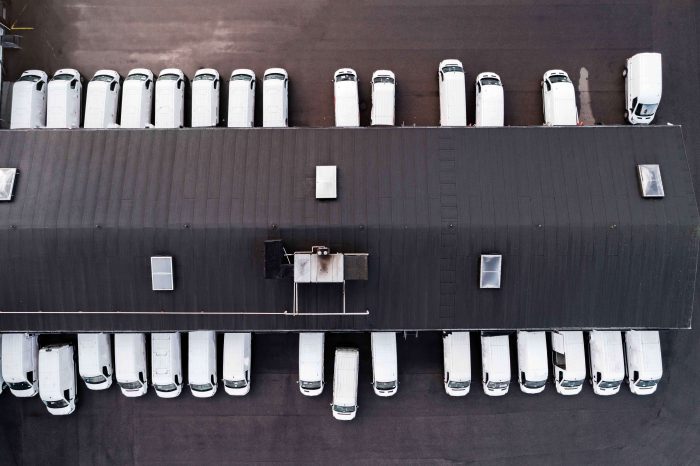
The Truck Roll Challenge
Truck Rolls – or the need to dispatch a technician to a customer’s location for service – represent one of the largest costs in customer service operations, across a wide range of industries.
Every time technician is dispatched, the company incurs a significant expense. Truck rolls cost anywhere from $150 – $500 per event, with that amount easily doubling when considering indirect costs. This includes :
Labor: Technician wages, un-billable travel time, administration
Vehicle: Fuel, maintenance, insurance, depreciation
Opportunity-cost: Technicians unavailable for revenue-producing activities
The high costs associated with dispatch are further increased by the 20% of dispatches that result in No Fault Found (NFF) – meaning the problem was so simple to fix that the customer could have resolved it alone.
These unnecessary truck rolls are a waste of the company’s time and resources. Worse, customer service inquiries that result in truck rolls often provide a poor CX, with unhappy customers waiting days without Internet service or a working washing machine. Then, a wide service window requires the customer to take time off from work – a practice that is both inconvenient and frustrating.
To reduce these truck roll costs and inefficiencies, service companies must find better solutions for better managing tech dispatches as well as for resolving more issues remotely.
Solution: Two New Technology Trends
There are two complementary trends in the market today that, together, have the power to significantly reduce truck rolls across a wide range of industries, such as telecom, utilities, consumer electronics, and more.
Predictive support through data analytics
Remote visual resolution through live streaming video and augmented reality
Utilizing both advanced data analytics and innovative AR remote assistance technology yields a highly efficient solution for customer service operations that directly reduces the need for truck rolls. Both solutions have a dramatic impact on the customer experience, improving support processes and lowering costs across the board.
Data Analytics: From reactive to predictive response
In today’s customer-centric environment, the once-acceptable model of reactive support – fixing a problem only after the customer complains – is no longer acceptable.
This approach has been replaced by data-based predictive models that analyze data retrieved from multiple systems, triggering the most efficient action.
There are a number of companies offering data analytics solutions that specifically address the issue of unnecessary truck rolls.
For example, OnProcess Technology, whose predictive analytics help enterprises avoid unnecessary truck rolls by ranking customer incidents according to their likelihood for resolution by phone or remote-access support. This allows the enterprise to focus efforts on calls likely to result in successful self service, and spend minimal time on those incidents that definitely require truck rolls.
Datameer’s Big Data analytics platform helps enterprises build accurate, descriptive data models that combine large volumes of data, such as call center data logs and truck roll work orders, with other datasets, such as HR data on call center agents and field technicians, to better understand the barriers to truck roll optimization.
Augmented Reality Remote Assistance
In today’s visual society, where YouTube, Instagram and Snapchat reign supreme, engaging customers via visualization is key to delivering a positive CX.
Remote visual support using live streaming video and augmented reality takes visual communication to the next level by allowing live interactive guidance on real life systems, devices and objects.
Instead of technical support agents attempting to explain with words how customers can fix their issues, they can visually show, point and demonstrate step-by-step actions that help with analysis to resolution.
Remote visual support enables fast, effective problem diagnosis and resolution between tech support agents and customers. Empowering an agent to see the issue with his own eyes eliminates the dependence on the customer to accurately describe the issue, allowing agents to use their technical knowledge much more effectively without requiring a truck roll.
TechSee’s visual engagement platform powered by AR & AI computer vision has been proven to eliminate 90% of unnecessary (NFF) truck rolls and drive a 15-25% decrease in overall truck rolls. In addition, when a truck toll is needed, remote visual support ensures that the right technician is deployed with the correct parts and tools. Should the technician encounter difficulty in the field, the same technology allows for remote consultation with an expert, thus improving first time fix rate and eliminating repeat truck rolls.
Better CX at lower cost
Leveraging advanced data analytics to minimize reactive support, coupled with augmented reality remote assistance, delivers a powerful approach to reducing costly truck rolls.
These two technologies deliver a better customer experience and a more cost effective method of addressing consumers’ technology issues. The technologies create a more efficient support operation, with less reliance on truck rolls and field technicians.
In today’s tough business environment, CX is the undisputed differentiator. The ability to provide better CX while lowering the costs of support is critical. Harnessing the power of data analytics and remote visual support transforms support organizations and gives an important edge to innovative brands.This post



